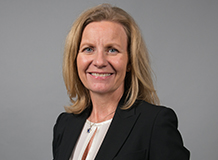
After more than 40 years of operation, DTVE is closing its doors and our website will no longer be updated daily. Thank you for all of your support.
Swedish freeze on 700MHz sale attracts Telia’s wrath
A move by the Swedish government to stop the sale of 700MHz spectrum on security ground has been met with sharp criticism from telecom operator Telia, which hoped to capture some of the released spectrum.
The country’s telecom regulator, the PTS, pulled the planned sale of 700MHz spectrum – bandwidth currently used for digital-terrestrial broadcasting across Europe – after protests from the country’s Säkerhetspolisen, the part of the police force concerned with national security, and from the armed forces, who expressed concerns about the sale of the spectrum to foreign companies.
Housing and digitisation minister Peter Eriksson said that the government needed to have a clear picture of long-term needs for defence and public safety before going ahead with the sale.
The armed forces and security organisations had called for spectrum to be kept under public control.
Under plans approved earlier in the year, the spectrum in question would be used for DTT broadcasting until April 1 next year, after which it would be allocated to commercial entities on the basis of an auction. The decision to pull the sale of the spectrum means that it will continue to be used for broadcasting until May 31 2018.
Telia said that the decision would massively complicate and delay the expansion of mobile networks in rural areas. The telco’s EVP for Sweden, Hélène Barnekow, said that the use of the 700MHz spectrum would be crucial for Sweden to be able to take the next steps in digitisation, and regretted the decision.
Barnekow said that while it was important for public services to have certainty about their ability to deliver communications, this was no reason to stop the auction. She said that mobile operators had already shown they could deliver a secure solution to address public safety concerns through their existing commercial mobile networks.



